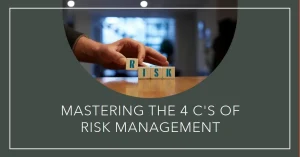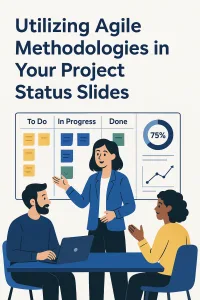Introduction to Bottom-Up Estimating
Bottom-up estimating is a project management technique that involves breaking down a project into smaller, manageable components and estimating the costs or durations for each of these elements individually. This method is particularly beneficial for complex projects where accuracy is critical, as it allows for a detailed assessment of each task involved in the project. By aggregating these individual estimates, project teams can develop a comprehensive estimate for the entire project, ensuring that all aspects are considered and accounted for [11][13].
Accurate estimation is vital in project management for several reasons:
- Resource Allocation: It helps in determining the necessary resources, including time, budget, and personnel, which are essential for successful project execution [10].
- Risk Management: Accurate estimates allow teams to identify potential risks and challenges early in the project lifecycle, enabling proactive management strategies [10].
- Stakeholder Confidence: Providing reliable estimates fosters trust and confidence among stakeholders, as they can see a well-thought-out plan that reflects realistic expectations [10].
In the context of Agile methodologies, bottom-up estimating aligns seamlessly with Agile principles. Agile emphasizes collaboration, flexibility, and iterative progress, which are all enhanced by the bottom-up approach:
- Team Involvement: Bottom-up estimating encourages the involvement of the entire project team in the estimation process. This collaborative effort not only leverages the diverse expertise of team members but also fosters a sense of ownership and accountability for the project outcomes [10][12].
- Adaptability: Agile projects often require adjustments based on feedback and changing requirements. The detailed nature of bottom-up estimating allows teams to adapt their estimates as new information becomes available, ensuring that the project remains aligned with its goals [14].
- Focus on Deliverables: By breaking down tasks into smaller components, teams can prioritize deliverables more effectively, ensuring that the most critical elements are addressed first, which is a core tenet of Agile methodologies [12][15].
The Role of Estimation in Agile Methodologies
Particularly within Agile frameworks, estimation plays a pivotal role in ensuring project success. Agile methodologies, such as Scrum and Kanban, emphasize adaptability and responsiveness to change, which necessitates a robust approach to estimation. Here’s an overview of how bottom-up estimating integrates into Agile practices and its significance in enhancing project outcomes.
Overview of Agile Methodologies
Agile methodologies prioritize flexibility and iterative progress, allowing teams to adapt to changing requirements and stakeholder feedback. Some of the most popular frameworks include:
- Scrum: Focuses on delivering work in short, time-boxed iterations called sprints, with regular reviews and adaptations.
- Kanban: Emphasizes continuous delivery and flow, using visual boards to manage work in progress.
- Lean: Aims to maximize value by minimizing waste and optimizing processes.
- Extreme Programming (XP): Enhances software quality and responsiveness through frequent releases and customer involvement.
These methodologies share a common goal: to deliver high-quality products that meet customer needs while being responsive to change.
The Necessity of Estimation in Sprint Planning and Backlog Refinement
Estimation is crucial in Agile for several reasons:
- Sprint Planning: Accurate estimation helps teams determine how much work can be realistically accomplished in a sprint. This is essential for setting achievable goals and maintaining team morale.
- Backlog Refinement: Regular estimation during backlog refinement sessions ensures that user stories are well understood and appropriately sized, facilitating smoother execution during sprints.
Bottom-up estimating, which involves breaking down tasks into smaller components and estimating each one individually, can significantly enhance the accuracy of these estimations. This method allows teams to consider all aspects of a task, leading to more reliable planning and execution.
Contrast Between Traditional Estimating Methods and Agile Approaches
Traditional project management often relies on a “top-down” estimating approach, where overall project costs and timelines are determined based on high-level requirements. This method can lead to inaccuracies, as it may overlook the complexities of individual tasks. In contrast, Agile methodologies favor a “bottom-up” approach, which offers several advantages:
- Increased Accuracy: By estimating each task individually, teams can create a more precise overall estimate, reducing the risk of underestimating project timelines and costs [1][10].
- Enhanced Team Engagement: Involving the entire project team in the estimation process fosters commitment and accountability, as team members contribute their insights and expertise [12][13].
- Adaptability: Agile environments are dynamic, and bottom-up estimating allows for adjustments based on real-time feedback and changing project conditions, aligning with Agile’s core principles of flexibility and responsiveness [1][7].
Integrating Bottom-Up Estimating in Agile Projects
Implementing bottom-up estimating in Agile projects can significantly enhance the accuracy of project timelines and resource allocation. This approach focuses on detailed assessments of individual tasks, allowing Agile teams to create more reliable estimates. Below is a practical guide on how to effectively integrate bottom-up estimating into Agile methodologies.
Step-by-Step Process for Gathering Detailed Task Estimates
Define User Stories: Begin by clearly defining user stories that encapsulate the requirements of the project. Each user story should represent a specific feature or functionality that delivers value to the end user.
Break Down User Stories: Decompose each user story into smaller, actionable tasks. This breakdown is crucial as it allows team members to focus on specific components of the project, making it easier to estimate the time and resources required for each task. Techniques such as affinity mapping or t-shirt sizing can be useful in this phase to categorize tasks based on complexity and effort [8][12].
Engage the Team: Involve the entire project team in the estimating process. This collaboration not only fosters a sense of ownership but also leverages the diverse expertise of team members. Encourage discussions around each task to ensure that all perspectives are considered, which can lead to more accurate estimates [9][10].
Estimate Each Task: Have team members provide their estimates for each task. This can be done through methods like Planning Poker, where team members discuss and vote on the effort required for each task, ensuring that everyone’s input is valued [8][9].
Consolidate Estimates: Once individual estimates are gathered, consolidate them to form a comprehensive view of the project timeline. This involves summing up the estimates for all tasks associated with a user story or project phase, providing a clearer picture of the overall effort required [4][10].
Techniques for Breaking Down User Stories into Actionable Tasks
- Work Breakdown Structure (WBS): Utilize a WBS to systematically break down user stories into smaller components. This structured approach helps in identifying all necessary tasks and ensures that nothing is overlooked [3][5].
- Task Decomposition: Encourage team members to think critically about each user story and identify all the steps needed to complete it. This may include design, development, testing, and deployment tasks, ensuring a comprehensive breakdown [5][12].
- Iterative Refinement: As the project progresses, continuously refine the breakdown of tasks. Agile methodologies emphasize adaptability, so be open to revisiting and adjusting estimates as new information becomes available or as project requirements evolve [6][10].
Ensuring Team Collaboration and Involvement in the Estimating Process
- Facilitate Open Communication: Create an environment where team members feel comfortable sharing their thoughts and concerns regarding estimates. Regular meetings and check-ins can help maintain transparency and encourage collaboration [9][10].
- Utilize Collaborative Tools: Leverage project management tools that allow for real-time collaboration and visibility into task estimates. Tools like Jira or Trello can facilitate discussions and updates on task progress and estimates [10][12].
- Foster a Culture of Trust: Build a team culture that values input from all members. Recognizing and rewarding contributions can motivate team members to engage actively in the estimating process, leading to more accurate and reliable estimates [9][10].
By following these best practices, Agile project teams and Scrum Masters can effectively implement bottom-up estimating, leading to improved project planning and execution. This approach not only enhances the accuracy of estimates but also promotes team collaboration and ownership, essential elements for successful Agile project management.
Best Practices for Effective Bottom-Up Estimating
Integrating bottom-up estimating into Agile methodologies can significantly enhance the accuracy and effectiveness of project estimations. Here are some key strategies that Agile project teams and Scrum Masters can adopt to optimize this approach:
- Encourage Team Ownership and Accountability in Estimation: Involving the entire project team in the estimation process fosters a sense of ownership and accountability. When team members contribute their insights and expertise, the estimates tend to be more accurate and reflective of the actual work required. This collaborative approach not only improves the quality of the estimates but also enhances team cohesion and commitment to project goals [6][9].
- Utilize Historical Data and Past Sprint Performance for Improved Accuracy: Leveraging historical data from previous projects or sprints can provide valuable insights into how long similar tasks took to complete. By analyzing past performance, teams can make more informed estimates that account for potential challenges and resource availability. This practice helps in creating a more realistic timeline and budget, reducing the risk of over- or under-estimation [10][12].
- Adopt Iterative Estimation Practices and Adjust as Needed During Sprints: Agile methodologies thrive on adaptability, and this principle should extend to the estimation process. Teams should adopt iterative estimation practices, allowing them to refine their estimates as the project progresses. Regularly revisiting and adjusting estimates based on new information or changes in project scope can lead to more accurate forecasting and better resource allocation. This flexibility is crucial in Agile environments where requirements may evolve [8][11].
By implementing these best practices, Agile project teams can enhance their bottom-up estimating processes, leading to improved project outcomes and greater overall efficiency.
Common Challenges and How to Overcome Them
Implementing bottom-up estimating in Agile projects can significantly enhance the accuracy of project timelines and costs. However, Agile project teams and Scrum Masters may encounter several challenges during this process. Below are some common pitfalls and strategies to overcome them:
1. Estimation Fatigue
Estimation fatigue occurs when team members become overwhelmed by the continuous need for detailed estimates, leading to decreased motivation and engagement. This can be particularly pronounced in Agile environments where iterations are frequent.
Solutions:
- Limit Estimation Sessions: Schedule shorter, focused estimation sessions to maintain energy and concentration. Instead of lengthy meetings, consider breaking down the estimation process into smaller, manageable parts.
- Rotate Estimation Roles: Encourage different team members to lead estimation sessions. This not only distributes the workload but also brings fresh perspectives to the process, reducing monotony.
2. Team Bias
Team bias can skew estimates, as team members may unconsciously favor their own experiences or opinions over objective data. This can lead to inflated or deflated estimates that do not accurately reflect the project’s needs.
Solutions:
- Involve Diverse Perspectives: Engage a variety of stakeholders in the estimation process, including team members from different disciplines and external experts. This diversity can help mitigate bias and provide a more rounded view of the project requirements.
- Use Historical Data: Leverage past project data to inform current estimates. By comparing similar tasks and their outcomes, teams can ground their estimates in reality rather than personal bias.
3. Resistance to Detailed Estimation
Some team members may resist the detailed nature of bottom-up estimating, viewing it as unnecessary or overly time-consuming. This resistance can hinder the effectiveness of the estimating process.
Solutions:
- Educate the Team: Provide training on the benefits of bottom-up estimating, emphasizing how it can lead to more accurate project planning and ultimately reduce stress during execution. Understanding the value can foster buy-in from the team.
- Incorporate Agile Principles: Frame the estimation process within Agile principles, such as flexibility and adaptability. Highlight that estimates are not set in stone and can evolve as the project progresses, which may alleviate concerns about rigidity.
4. Time Constraints
Agile projects often operate under tight deadlines, making it challenging to allocate sufficient time for thorough estimating sessions. This can lead to rushed estimates that compromise accuracy.
Solutions:
- Prioritize Key Tasks: Focus on estimating the most critical tasks first. By identifying high-impact areas, teams can ensure that their efforts are directed where they will have the most significant effect on project success.
- Utilize Estimation Techniques: Implement techniques such as Planning Poker or T-shirt sizing, which can streamline the estimation process. These methods encourage quick consensus and can be more efficient than traditional estimation approaches.
By recognizing these challenges and implementing effective strategies, Agile project teams can successfully integrate bottom-up estimating into their workflows, leading to improved project outcomes and enhanced team collaboration.
Tools and Techniques for Bottom-Up Estimating
Integrating bottom-up estimating into Agile methodologies can significantly enhance the accuracy and effectiveness of project planning. This section outlines popular tools and techniques that Agile project teams and Scrum Masters can leverage to facilitate this estimation approach.
Overview of Popular Project Management Tools
- Jira:
- Jira is widely recognized for its robust capabilities in Agile project management. It allows teams to break down projects into smaller tasks, making it easier to apply bottom-up estimating. Users can create detailed issues for each task, estimate time and resources, and track progress through customizable workflows.
- The integration of Agile boards (Scrum and Kanban) in Jira helps visualize the project’s progress, making it easier to adjust estimates as needed.
- Trello:
- Trello offers a more visual approach to project management with its card-based system. Teams can create boards for different projects and use cards to represent tasks. Each card can include checklists, due dates, and comments, facilitating detailed task breakdowns essential for bottom-up estimating.
- Trello’s flexibility allows teams to adapt their boards to fit their specific Agile processes, enhancing collaboration and transparency.
- Asana:
- Asana provides a user-friendly interface for managing tasks and projects. It allows teams to create subtasks under larger tasks, which is crucial for bottom-up estimating. The timeline feature helps visualize project schedules and dependencies, aiding in more accurate estimations.
- Microsoft Project:
- While traditionally used in waterfall methodologies, Microsoft Project can also support Agile practices. Its Gantt chart feature allows teams to break down tasks and visualize timelines, making it easier to estimate durations and resources at a granular level.
Techniques for Collaborative Estimation
- Planning Poker: Planning Poker is a consensus-based estimation technique that combines expert judgment with collaborative discussion. Team members use numbered cards to estimate the effort required for each task, promoting engagement and ensuring that all perspectives are considered. This technique is particularly effective in Agile environments where team dynamics are crucial.
- T-shirt Sizing: T-shirt sizing is a relative estimation technique that categorizes tasks into sizes (XS, S, M, L, XL) based on their complexity and effort. This method simplifies the estimation process and encourages team discussions about the scope and requirements of each task, making it easier to reach a consensus.
Using Visual Aids
- Story Maps: Story mapping is a visual technique that helps teams understand the user journey and prioritize tasks based on user needs. By mapping out the tasks required to deliver a feature, teams can better estimate the effort involved in each component, enhancing the bottom-up estimating process.
- Kanban Boards: Kanban boards provide a visual representation of work in progress, allowing teams to see the status of tasks at a glance. This visibility helps in identifying bottlenecks and adjusting estimates based on real-time data, making it a valuable tool for Agile project teams.
By utilizing these tools and techniques, Agile project teams can effectively implement bottom-up estimating, leading to more accurate project planning and improved team collaboration. This approach not only enhances the estimation process but also fosters a culture of transparency and shared understanding among team members.
Conclusion
The integration of bottom-up estimating practices can significantly enhance both project accuracy and team collaboration. By breaking down projects into smaller, manageable components, Agile teams can provide more precise estimates that reflect the true scope of work involved. This detailed approach not only fosters a deeper understanding of project requirements but also encourages active participation from all team members, leading to stronger commitment and accountability throughout the project lifecycle [1][12].
As Agile methodologies continue to evolve, it is essential for teams to embrace ongoing learning and adaptation of their estimating practices. The dynamic nature of Agile projects demands flexibility, and teams should be open to refining their estimation techniques based on past experiences and emerging best practices. This iterative process will not only improve the accuracy of future estimates but also enhance the overall effectiveness of Agile project management [10][15].
In summary, adopting bottom-up estimating in Agile projects is a strategic move that can lead to more accurate forecasts and improved team dynamics. As we look to the future, let us commit to learning from one another and evolving our practices to meet the challenges of Agile project management head-on.
Find out more about Shaun Stoltz https://www.shaunstoltz.com/about/.
This post was written by an AI and reviewed/edited by a human.



